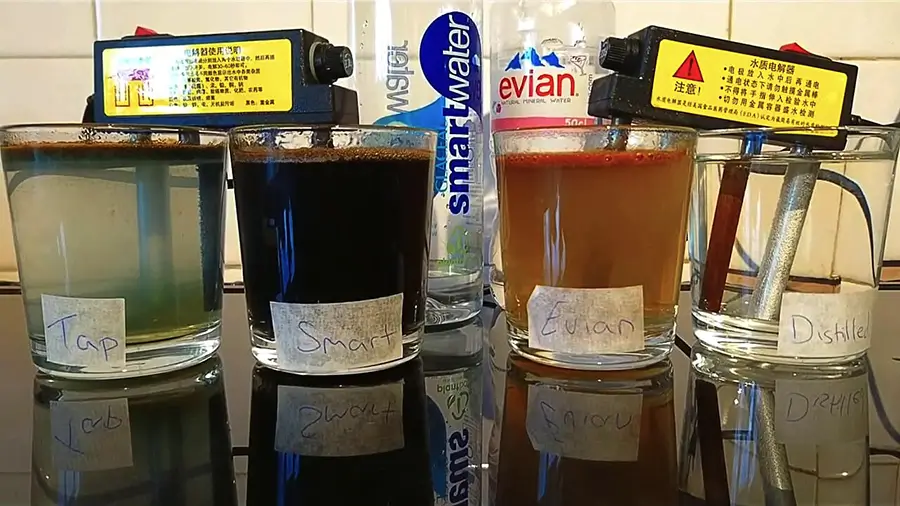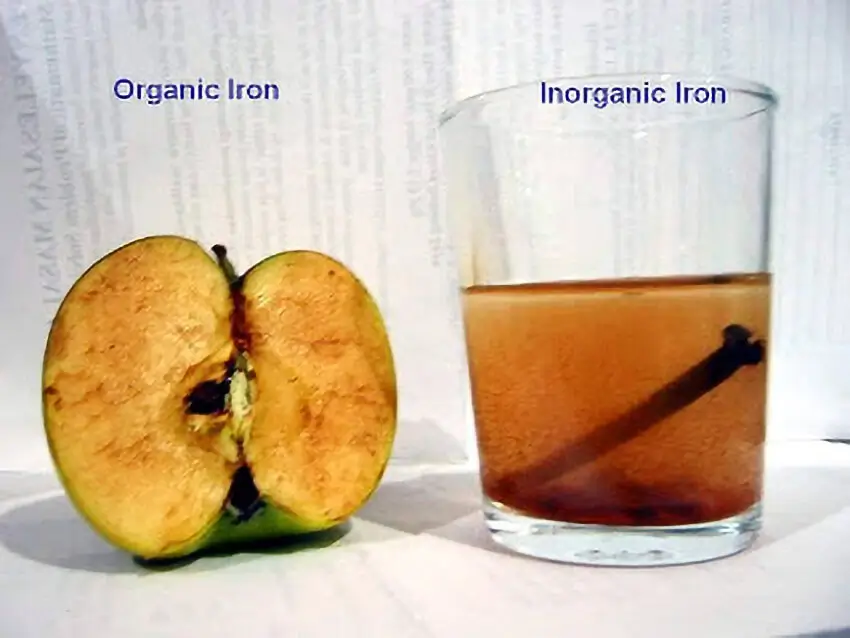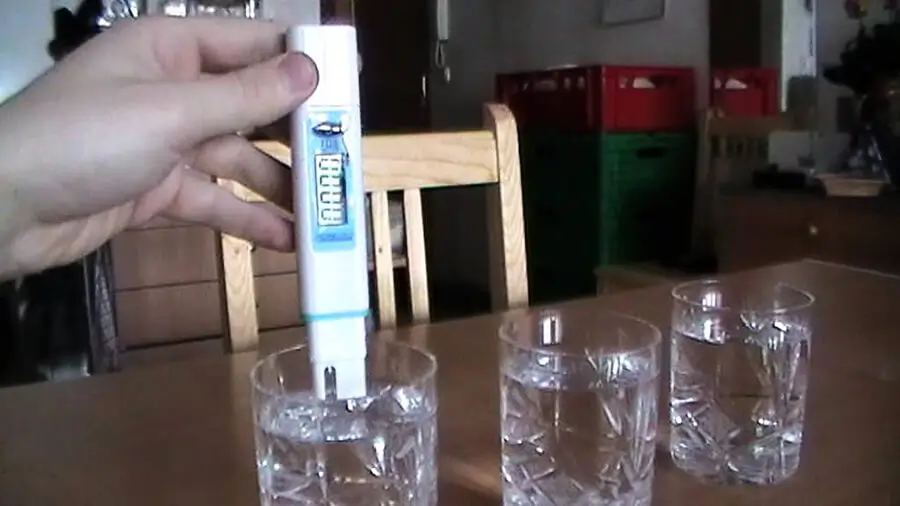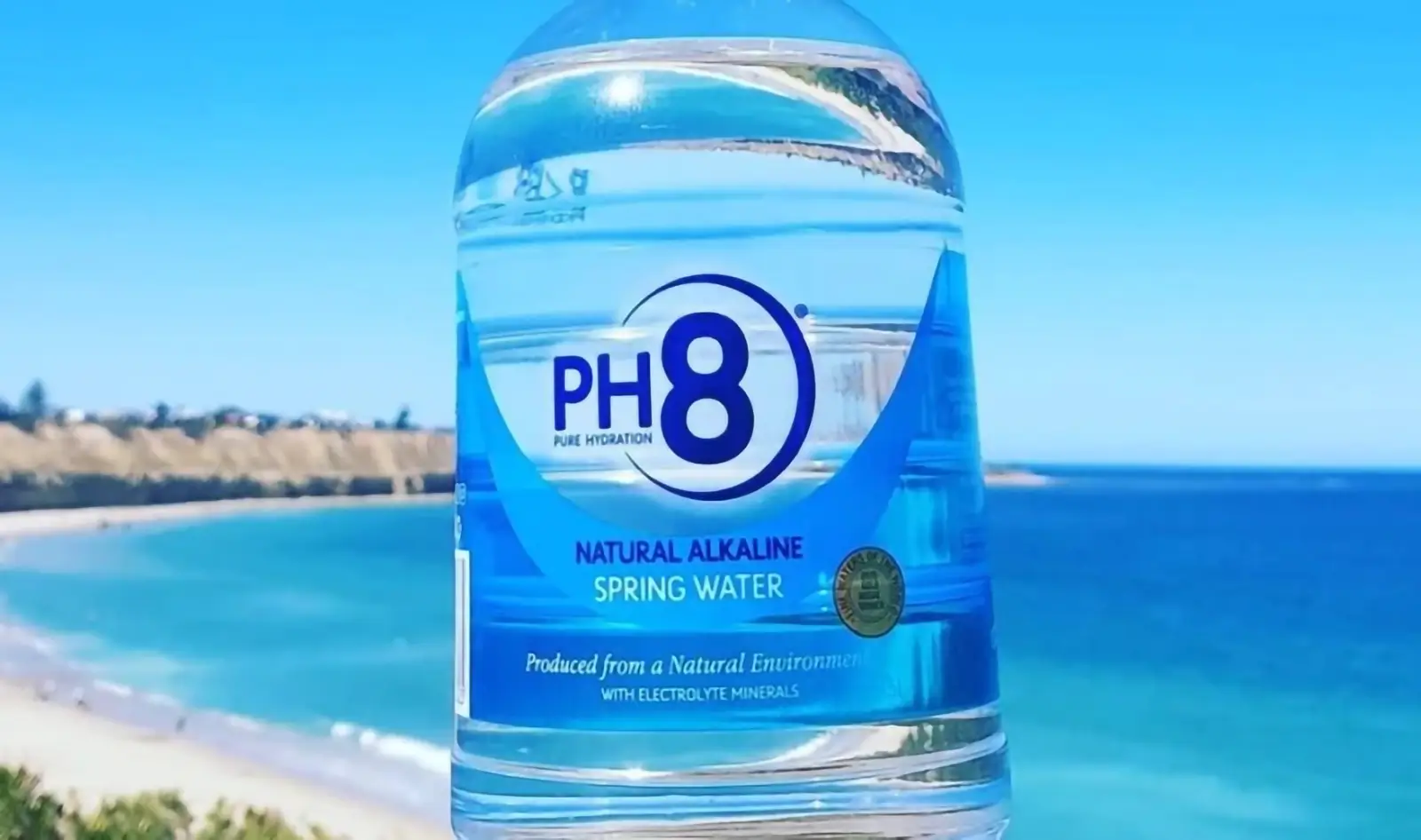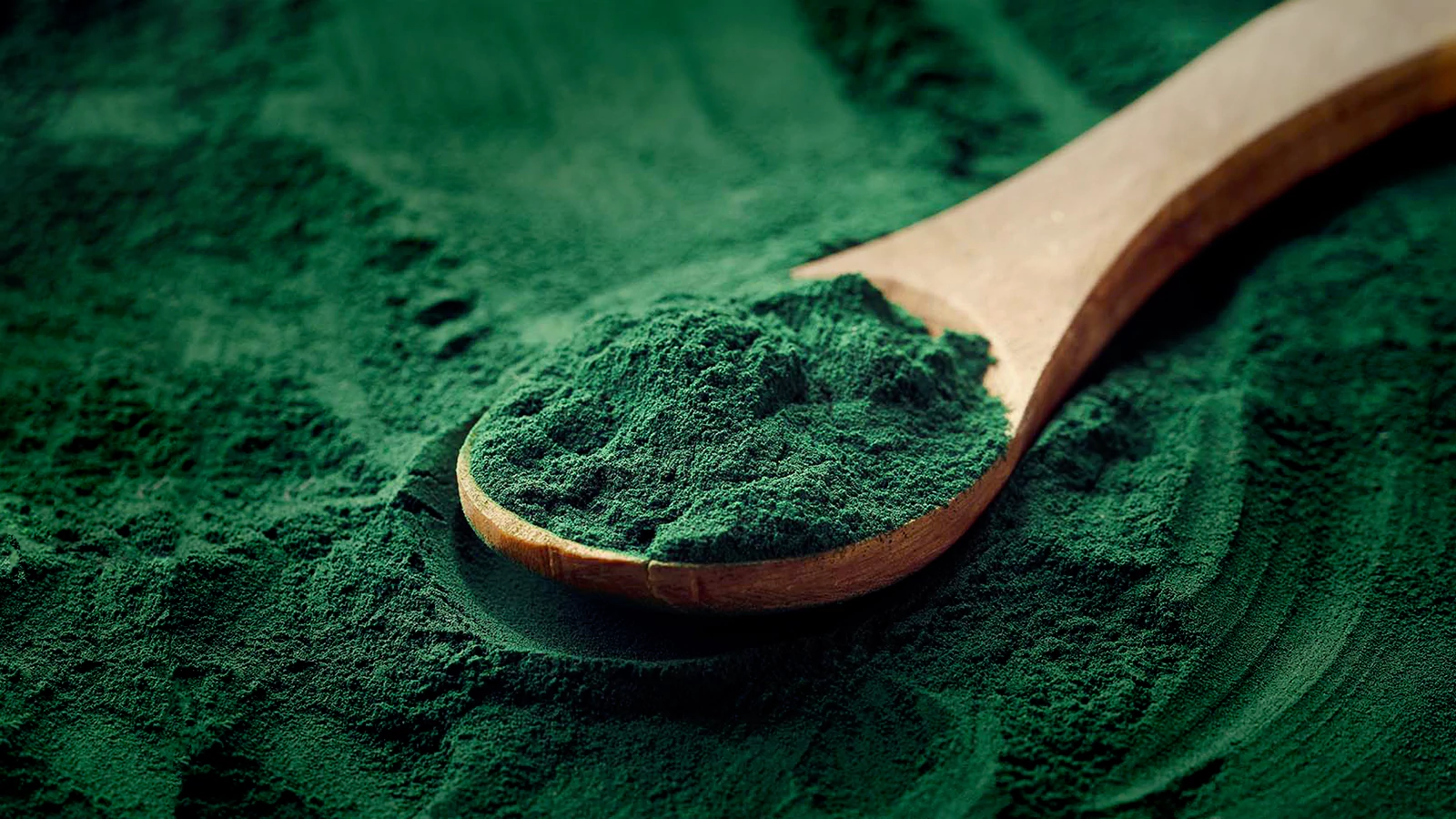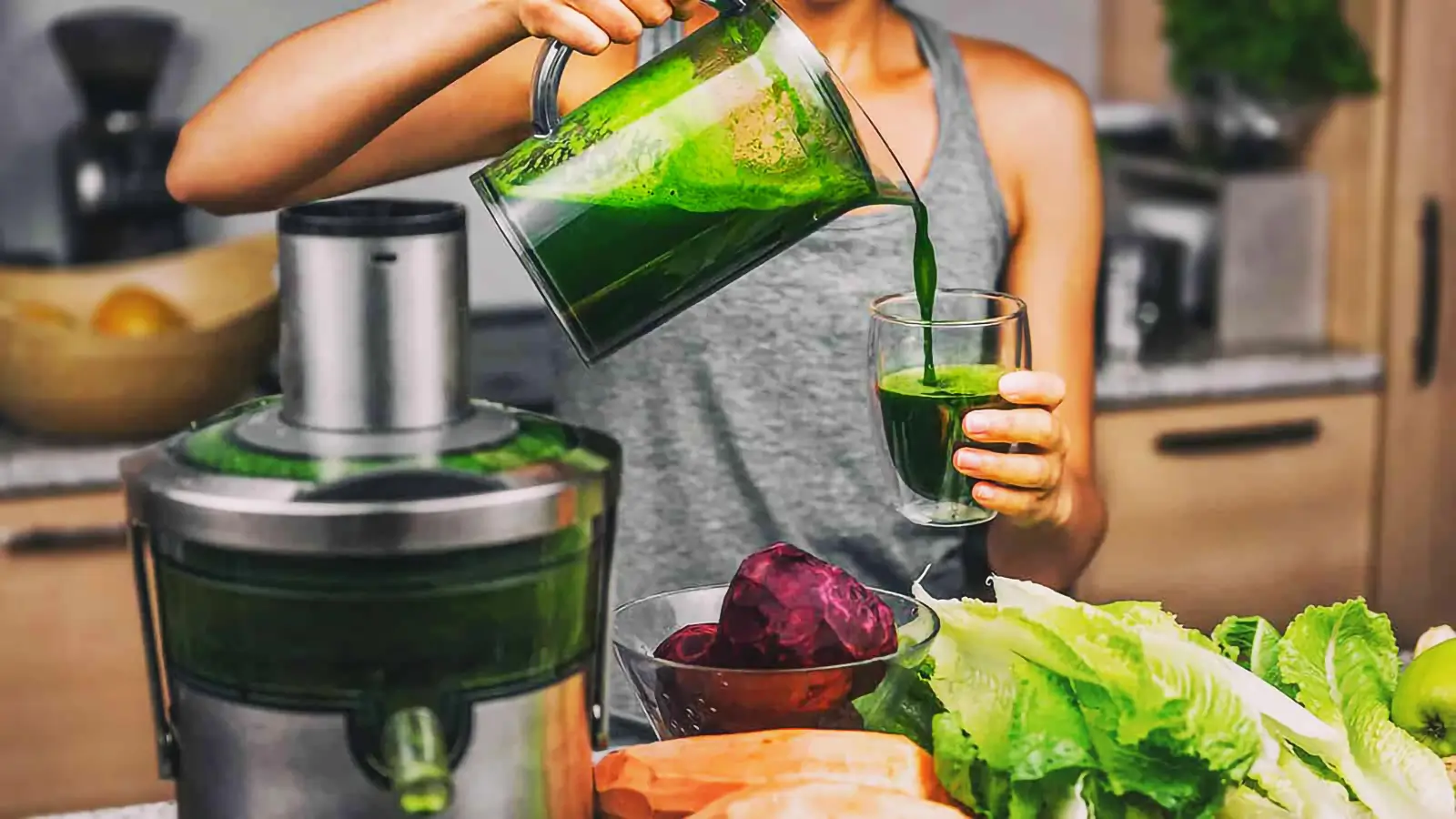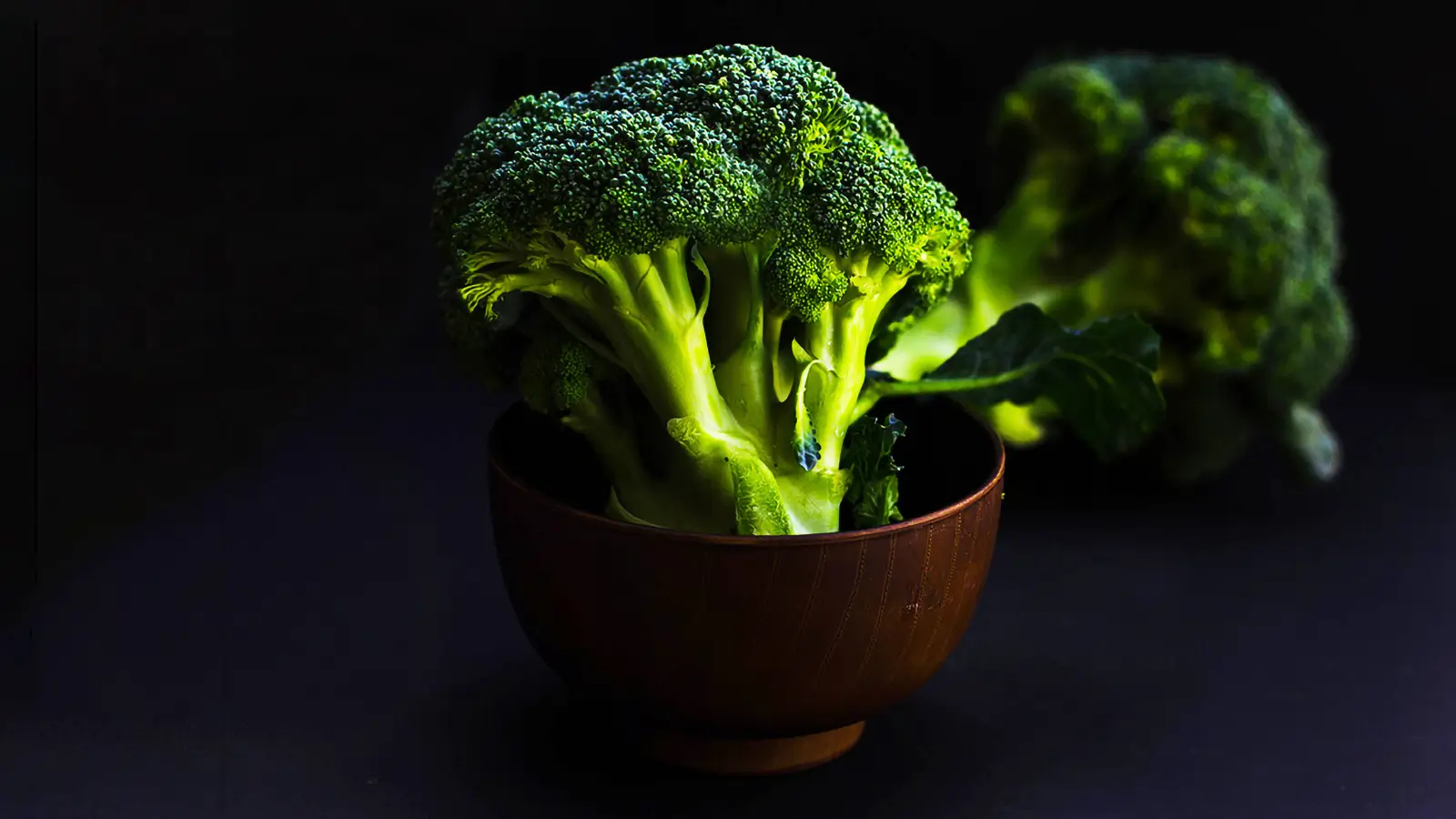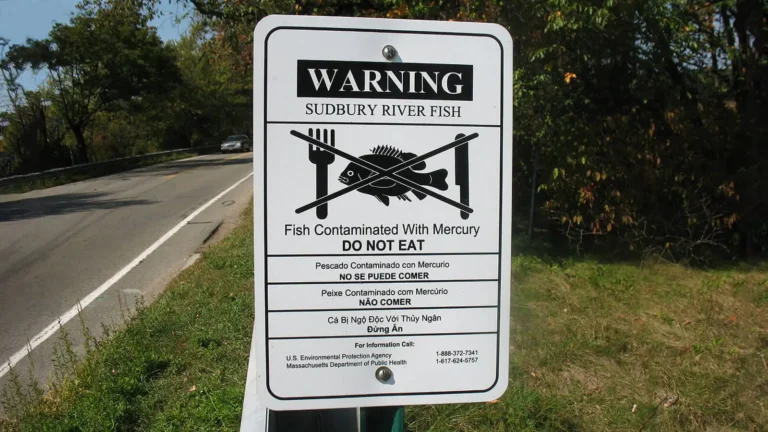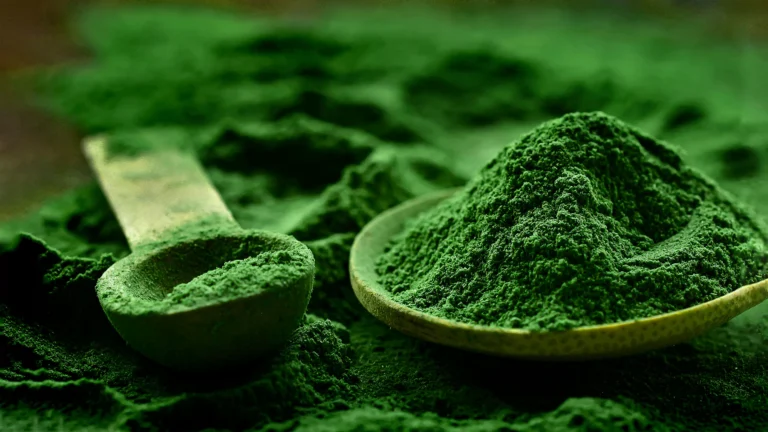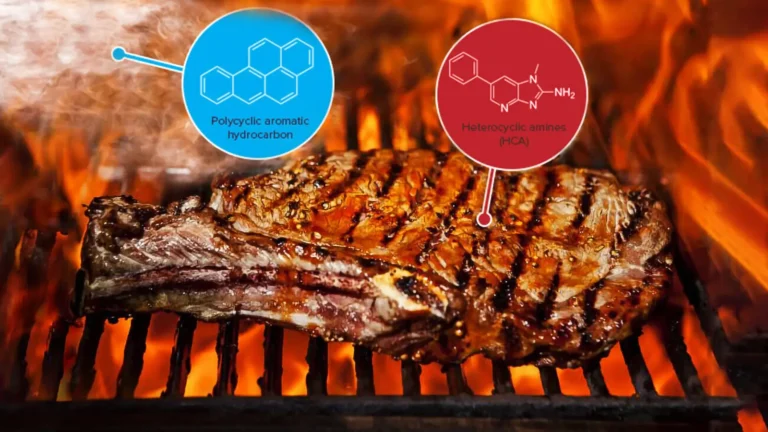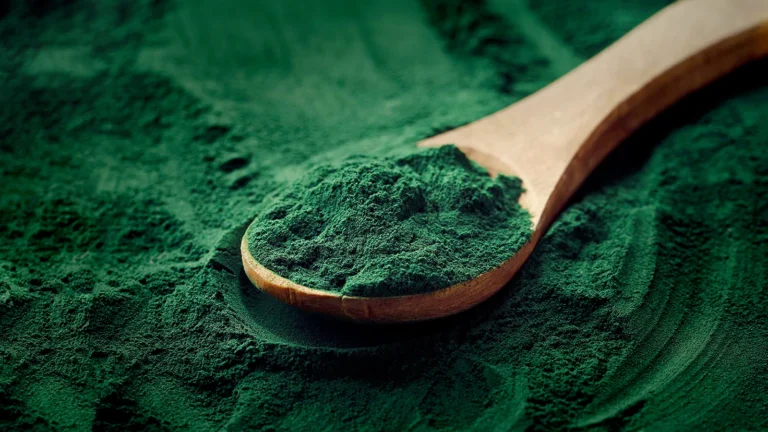Distilled Water for Drinking- Detoxification Aid or a Deadly Poison?
There is much misinformation about the detoxifying properties of water and distilled water in particular. What science has to say about it?
Milos Pokimica
Written By: Milos Pokimica
Medically Reviewed by: Dr. Xiùying Wáng, M.D.
Updated August 4, 2023There is much misinformation about the detoxifying properties of water and distilled water in particular. Dealing with demineralized water can have adverse effects too. It is not something average people should do if they do not completely understand the entirety of the process first. How many people know that distilled water does not conduct electricity? It even has a different magnetic charge potential than hard water and it is exactly this magnetic charge that can help to some extent with the elimination of toxic substances but the most important issue is not the detoxifying properties of demineralized water. It is, but it is also avoiding all of the toxic load that comes along with regular polluted water. Water purification is a big business.
Also, it is not unnatural. All clouds in the world are distilled water. Rain and snow too. It is not some chemical produced in the lab like Coca-Cola. It is just pure water H2O without anything else in it.
In the human body water functions as a solvent and a medium for the transport of nutrients. It is also a transport mechanism for waste products. It regulates body temperature, lubricants the joints, and has many other biochemical reactions. It is the water, only water H2O not any other dissolved and suspended minerals that do any of these functions. It is just water.
When water is low in TDS (total dissolved solids) that means that it has not too many dissolved minerals in it. If water is distilled, that means that it does not have anything in there but H2O. Total dissolved solids in distilled water are zero. It also has different electrical charge properties that make distilled water unique in that manner that it has the capability to attract inorganic minerals and toxins just by itself.
Distilled water wants to saturate itself sort of speak, and that is a property that can be wary useful if you want to detoxify yourself. It is believed that distilled water can help the detoxification process by washing out excess inorganic minerals and toxins from deposits and other parts of the body.
There is a big difference between inorganic and organic minerals. Realistically, minerals are just inorganic metals, so it makes no difference where you get your minerals. The most important factor when we talk about organic vs. inorganic minerals is not composition, it is the same metal, but it is the size and the form they are in. A plant takes the artificial, inorganic minerals from the soil where it is growing that are big chunks of metal if you like that analogy. When plants take up inorganic minerals from the ground by the roots then they synthesize them, or if you like break them down into a molecular size and forms that are small enough to do regular biological functions in living matter.
Mineral water that comes from the stream is saturated with inorganic molecules. The size of these minerals is not small enough for us to do biological functions so we call them inorganic, not because they are some other molecular substance but just because the size of the molecule is too big. Think of it this way, in mineral water coming from the streams there are also small chunks or rocks that water breaks off, but you cannot see them with the naked eye. They are small but not small enough, at least not small enough to be used as an organic form of minerals.
There is only one way that the human digestive system can break down larger tightly bound minerals into usable ions, and that is with stomach acid. The food transit time through the stomach is about one hour. If the inorganic mineral ion is not ionized during this small amount of time and the mineral moves from the high-acid environment of the stomach no further beneficial breakdown will take place in the small intestines. All further break down ceases. If the inorganic mineral compound is already relatively small like from deep spring water, it might get degraded to smaller monoatomic scale particles by the acid in the stomach and be bioavailable. Once minerals left the acidic environment of the stomach the remainder of the non-ionized minerals are of no use to us and are in no way available to do any biological functions inside our body except negative ones. Usually, they will just pass through our GI tract unusable. But If you ingest big chunks of metals called inorganic minerals they might end up in the bloodstream in small quantities. However, they can pass into the bloodstream in large quantities if you have a leaky gut or inflammation in the intestines.
They will not be small enough to integrate into cells or do any other biological function and will create deposits in the body if the body does not remove them.
There is unproven speculation that you will even receive from your regular MD that distilled water is dangerous for your health because it would leech minerals out of the body and can cause some mineral deficiencies.
Speculation is that absorbing extremely purified water, treated by distillation, reverse osmosis, or deionization, leaches minerals from the body.
Because there are minerals in the water in the first place drinking distilled water will make problems in the same manner as removing for example husk from the wheat with all of its minerals and eating just refined flour. They say that minerals in water are a necessary part of our mineral absorption. There were some Russian studies done on this topic and are available through the World Health Organization. The summary was that fluid and electrolytes are better replaced with water containing a minimum of 100 mg/L of TDS. However, this only has relevance in specific situations where the human body was exposed to heavy exertion and sweating. It is the market for sports drinks and there is only one substance glucose, regular sugar, that was added to help muscles to replenish the loss of glycogen quickly and to promote more energy in prolonged exercise. Low TDS or demineralized water has nothing to do with it, and for everyday drinking and cooking purposes, it is the best choice. The body has the mechanisms to regulate within very narrow limits the concentrations of minerals (ions) and water as well in all cells and all organs in the body.
The organ that is most responsible for mineral balancing is the kidneys. They maintain ion concentrations and not just sodium and potassium and calcium but most of the minerals in the normal range during a process of elimination and reabsorption.
There is a process called osmosis or osmotic pressure. When sodium ions outside of the cell and potassium ions inside of the cell are out of balance, then the osmotic pressure is out of balance. That will cause the water to flow across the cell membrane to neutralize the difference in osmotic pressure. Any changes that can happen in a reasonable range of concentration of ions is adjusted in a couple of seconds because water moves quickly through cell membranes. Drinking distilled water (0 to 100 mg/L TDS) has nothing to do with it. If any changes occur in the body, it will be rapidly brought to equilibrium with absolutely no consequence. It is the kidneys that in reality control the overall concentration of the constituents of body fluids and not some minuscule amounts of inorganic minerals in tap water. Kidneys on average men filter about 180 liters of water per day. Over 99% is reabsorbed to the bloodstream, and only 1.0 to 1.5 liters are eliminated as urine. If you drink distilled low ion concentration TDS water, nervous and hormonal feedback mechanisms will cause the kidneys to eliminate extra water that is not needed and thus maintain the ion concentration in the body fluid to normal values. The opposite is also true. If the ion concentration in the fluid to be filtered is higher than normal, the kidney’s homeostatic mechanism will keep fluid osmolality normal by retaining water.
That is why you bloat when eating too much salt and too little potassium. It is not the sodium that is a problem. It is unopposed sodium because there is a lack of potassium in the body. When a healthy person drinks low TDS water, it should not cause any health issues.
Significant nutritional deficiencies might cause a leaching problem in the long run, which is what MD will argue.
How much of consuming one to two liters of low TDS water on a daily basis cause a leaching problem in reality? We will have to look into this in more detail.
If we count all of the minerals in spring water as organic, they will not be able to compound to more than a couple of percent of the total minerals digested. Usually, minerals should come from food, not from water. Drinking pure, pristine spring water from the unpolluted earth of the past it would not be a problem. Now it is. And distilled water may have some benefits too. WHO had done experiments on volunteers. Results showed that when people start to drink distilled water, the increased diuresis happens with 20% more body water volume, and also serum sodium concentrations decrease. So you excrete more water and lose some sodium. The second thing that was observed was the decrease in potassium serum concentration. To sum it up, drinking distilled water increase the elimination of sodium, potassium, chloride, calcium, and magnesium ions from the body. Distilled water interacts with another gastrointestinal tract by osmoreceptors, causing an enhanced movement of sodium ions into the intestinal lumen. This will then cause a slight reduction in osmotic pressure in the blood with the following enhanced discharge of sodium into the blood as an adaptation response. In response volume receptors in the bloodstream are activated, inducing an increase in sodium elimination. Now, this will not be a problem in nature, but especially now it is not because we have our salt shaker on every table and this can be actually beneficial depending on how much salt you eat and how much distilled water you drink.
There is one other real issue with demineralized water, and that is why I said you need to know what you are doing. When used for cooking, soft water was found to leech a substantial amount of minerals out of food no matter what that food is. In some cases, losses can reach up to 60 to 90 percent. Numbers for calcium and magnesium are about 60 percent, manganese 70 %, copper 66 %, cobalt 86 %, and so on. This can represent a problem because if you cook with soft or distilled water and then throw away that water, you are going to lose much of your nutrition.
That is why you do not cook with it if the water that is used for cooking is not going to be consumed. When you soak beans, for example, use regular water. When you cook beans use regular water or when you cook anything that is going to be rinsed after using regular water.
In contrast, distilled water’s capability to leech nutrients from food is turned into a positive thing if you are going to drink that water. When we eat, we do not absorb all of the nutrients that are in the food. We absorbed some of them, but some of them are not absorbed. It is what we absorbed not what we eat sort of a thing. So using soft or distilled water can help us to absorb more from the food. For example, use it to make tea. Or when I want to make soup or some other dish, I use distilled water because it will leach from the food and help me get more from the same food than regular water and I know it would not have all the polluting chemicals in there. When I eat that soup or drink tea, it is not distilled water anymore. If I want to make soy milk, for example, I am going to use the knowledge of water to my benefit by soaking the beans in regular water and then cooking the beans in regular water that will not leach much of the nutrients from the beans. However, then when I want to blend them into the milk, I will rinse the beans and use distilled water for blending because I want to leech most of the nutrients from the beans to make the milk. So again you need to know what you are doing. I personally don’t drink much water because I drink a lot of vegetable juices throughout the day and I eat a lot of fruits that are mostly water and plus all the water from cooked meals, so I do not have a leaching problem. I like the cleanness and leaching potential of distilled water for detoxification, but again I will drink no more than maybe a glass or two in the day. If you drink 2 liters of water because you do not eat fruit or vegetables and don’t eat cooked meals and are already potassium deficient like 98% of Americans and then go on a diet with gallons of detoxifying distilled water you might get into a more deficient state then the one you are already in. So again I cannot tell you to drink or not to drink it, it is a more complex issue, and you need to do your own research based on the quality of the mineral content of your diet.
Why I drink and cook with it is precisely because of its potential to leach toxins and inorganic minerals out, and regular minerals I get from food or even sometimes from supplements depending on my diet. I usually take iodine and some organic trace minerals solution from time to time. One more thing about leeching minerals. It will not leach any minerals that have already become integrated into the cells. It collects only minerals that have already been rejected or excreted by the cells. Mostly inorganic minerals will be removed. They have a different electrical charge than organic ones and are themselves attracted to the distilled water by the charge. Distilled water will not leach minerals from your tissue cells. I do periodic blood testing to see the levels of electrolytes and other minerals, and I never had a problem.
And one more thing that is important. Some chemicals are not water-soluble. This form of fat-soluble toxins the body cannot eliminate through urine. It must be eliminated through the fiber in the intestines. Fiber is our natural detoxifier for fat-soluble chemicals. Detoxifying without fiber is not complete. The best thing to detoxify is something that has distilled water, all the minerals and vitamins, and fiber. So you can try to do distilled water fasting with psyllium husk and organic mineral solution or just eat a lot of raw organic vegetables and keep in mind that detoxification also depends on the half-life of the substances you have already ingested. Distillation does not remove all of the toxins also. Toxins that can be turned into vapor below 100 degrees Celsius will be distilled with the water. These are usually some of the pesticides. They can be removed and often home distillatory devices have secondary filters made from carbon just because of this. Also, radioactive particles will not vaporize because they have a higher boiling temperature than water. For people who live in the Fukushima area and for all preppers out there to know that when nuclear winter comes you can distill the water and it will lose all of the radioactivity.
References:
Passages selected from a book: Pokimica, Milos. Go Vegan? Review of Science Part 1. Kindle ed., Amazon, 2018.
Related Posts
Do you have any questions about nutrition and health?
I would love to hear from you and answer them in my next post. I appreciate your input and opinion and I look forward to hearing from you soon. I also invite you to follow us on Facebook, Instagram, and Pinterest for more diet, nutrition, and health content. You can leave a comment there and connect with other health enthusiasts, share your tips and experiences, and get support and encouragement from our team and community.
I hope that this post was informative and enjoyable for you and that you are prepared to apply the insights you learned. If you found this post helpful, please share it with your friends and family who might also benefit from it. You never know who might need some guidance and support on their health journey.
– You Might Also Like –

Learn About Nutrition
Milos Pokimica is a doctor of natural medicine, clinical nutritionist, medical health and nutrition writer, and nutritional science advisor. Author of the book series Go Vegan? Review of Science, he also operates the natural health website GoVeganWay.com
Medical Disclaimer
GoVeganWay.com brings you reviews of the latest nutrition and health-related research. The information provided represents the personal opinion of the author and is not intended nor implied to be a substitute for professional medical advice, diagnosis, or treatment. The information provided is for informational purposes only and is not intended to serve as a substitute for the consultation, diagnosis, and/or medical treatment of a qualified physician or healthcare provider.NEVER DISREGARD PROFESSIONAL MEDICAL ADVICE OR DELAY SEEKING MEDICAL TREATMENT BECAUSE OF SOMETHING YOU HAVE READ ON OR ACCESSED THROUGH GoVeganWay.com
NEVER APPLY ANY LIFESTYLE CHANGES OR ANY CHANGES AT ALL AS A CONSEQUENCE OF SOMETHING YOU HAVE READ IN GoVeganWay.com BEFORE CONSULTING LICENCED MEDICAL PRACTITIONER.
In the event of a medical emergency, call a doctor or 911 immediately. GoVeganWay.com does not recommend or endorse any specific groups, organizations, tests, physicians, products, procedures, opinions, or other information that may be mentioned inside.
Editor Picks –
Milos Pokimica is a health and nutrition writer and nutritional science advisor. Author of the book series Go Vegan? Review of Science, he also operates the natural health website GoVeganWay.com
Latest Articles –
Top Health News — ScienceDaily
- MIT scientists strip cancer of its sugar shieldon December 23, 2025
Scientists at MIT and Stanford have unveiled a promising new way to help the immune system recognize and attack cancer cells more effectively. Their strategy targets a hidden “off switch” that tumors use to stay invisible to immune defenses—special sugar molecules on the cancer cell surface that suppress immune activity. Early tests show it can supercharge immune responses and outperform current antibody therapies.
- Scientists find a weak spot in deadly fungus that shut down hospital intensive care unitson December 23, 2025
A deadly hospital fungus that resists nearly every antifungal drug may have an unexpected weakness. Researchers discovered that Candida auris activates specific genes during infection to hunt for nutrients it needs to survive. This insight came from a new living-host model that allowed scientists to watch the fungus in action. The findings could eventually lead to new treatments or allow current drugs to be repurposed.
- This ultra-sensitive imaging system can spot cancer earlieron December 23, 2025
A new imaging technology can distinguish cancerous tissue from healthy cells by detecting ultra-weak light signals. It relies on nanoparticles that bind to tumor markers, making cancerous areas easier to identify. The system is far more sensitive than existing tools and could speed up cancer screening. Scientists believe it may help detect tumors earlier and reduce delays in diagnosis.
- Hidden brain maps that make empathy feel physicalon December 23, 2025
When we watch someone move, get injured, or express emotion, our brain doesn’t just see it—it partially feels it. Researchers found eight body-like maps in the visual cortex that organize what we see in the same way the brain organizes touch. These maps help us instantly understand actions, emotions, and intentions in others. The discovery sheds light on human empathy and opens doors for new brain-based therapies and AI systems that better understand the body.
- Are they really listening? Watch their blinkson December 23, 2025
Your eyes may reveal when your brain is working overtime. Researchers found that people blink less when trying to understand speech in noisy environments, especially during the most important moments. The effect stayed the same in bright or dark rooms, showing it’s driven by mental effort, not light. Blinking, it turns out, is a quiet marker of focused listening.
- This cancer-fighting molecule took 50 years to buildon December 22, 2025
MIT scientists have achieved the first-ever lab synthesis of verticillin A, a complex fungal compound discovered in 1970. Its delicate structure stalled chemists for decades, despite differing from related molecules by only two atoms. With the synthesis finally complete, researchers created new variants that showed strong activity against a rare pediatric brain cancer. The breakthrough could unlock an entire class of previously unreachable cancer-fighting molecules.
- A new drug could stop Alzheimer’s before memory loss beginson December 22, 2025
New research suggests Alzheimer’s may start far earlier than previously thought, driven by a hidden toxic protein in the brain. Scientists found that an experimental drug, NU-9, blocks this early damage in mice and reduces inflammation linked to disease progression. The treatment was given before symptoms appeared, targeting the disease at its earliest stage. Researchers say this approach could reshape how Alzheimer’s is prevented and treated.
PubMed, #vegan-diet –
- Comparing diet-related attitudes, perceptions, and behaviors of vegan and omnivorous adults: results from a cross-sectional survey study in Germanyon December 22, 2025
CONCLUSION: The findings are consistent with and build on existing research on cognitive and behavioral patterns related to a vegan diet, while at the same time yielding some additional insights. In particular, the results on significant differences in the risk-benefit perception of a vegan diet, as well as on motivations and influences regarding the decision to follow a vegan diet provide an important basis for the development of public health interventions and a foundation for further […]
- Assessment of vitamin A, vitamin B2, vitamin B12, vitamin K, folate, and choline status following 4 months of multinutrient supplementation in healthy vegans: a randomised,…on December 19, 2025
CONCLUSION: A multinutrient supplement containing 82 µg of vitamin B(12) per day significantly positively affected vitamin B(12) blood biomarkers in healthy vegans.
- Exploring the synergistic potential of pH and ultrasonication on the functional properties of pea and lentil protein isolates and its formulation in food producton December 15, 2025
The substitution of meat proteins with plant-based proteins from various sources is often motivated by nutritional considerations. However, the inherent limited solubility of plant proteins, which results in suboptimal techno-functional properties, remains a persistent challenge in food formulation. The purpose of this study was to utilize unique properties of pea (Pisum sativum L.) and lentil (Lens culinaris) through ultrasonication and pH variation in order to develop a stable and […]
- Healthful and Unhealthful Plant-Based Diets and Their Association with Cardiometabolic Targets in Women Diagnosed with Breast Cancer: A Cross-Sectional Analysis of a Lifestyle Trialon December 11, 2025
CONCLUSIONS: Maintaining cardiometabolic risk factors within normal ranges is clinically relevant in BCS, and this may be more likely when a plant-based diet is consumed, especially if low in unhealthy plant foods.
- Functional and Nutritional Properties of Lion’s Mane Mushrooms in Oat-Based Desserts for Dysphagia and Healthy Ageingon December 11, 2025
Hericium erinaceus (Lion’s Mane mushroom) is a medicinal species recognised for its neuroprotective and antioxidant properties. This study investigated its potential as a functional ingredient in oat milk-based desserts formulated for individuals with dysphagia. Freeze-dried Lion’s Mane powder (LMP), containing high-quality protein (~16%, amino acid score 88%), dietary fibre (~31%), and phenolic compounds (72.15 mg GAE/g), was incorporated at varying levels using gelatin or iota-carrageenan […]
Random Posts –
Featured Posts –
Latest from PubMed, #plant-based diet –
- Associations Between Healthy and Plant-Based Dietary Patterns and Cognitive Reserve: A Cross-Sectional Analysis of the 1946 British Birth Cohortby Kelly C Cara on December 23, 2025
CONCLUSIONS: CR was positively associated with healthy dietary patterns and inversely associated with unhealthful plant-based dietary patterns. Diet uniquely explained variations in CR and should be considered among influential lifestyle factors in future research. Longitudinal analyses are needed to confirm these findings.
- Patient-Reported Observance of a Mediterranean Diet and Physical Activity in Patients Living with Breast Cancer: Implications for Primary Care Providersby Lydia Hesseltine on December 23, 2025
CONCLUSION: The majority of patients living with breast cancer did not meet the minimal national recommendations. These findings underscore the need for further research to develop strategies to optimize nutrition and physical activity within oncology and primary care settings.
- Dietary Hydrilla verticillata extract enhances growth and immune defense against Aeromonas hydrophila in Labeo rohitaby Faiza Khanam on December 23, 2025
This study investigated the effects of dietary Hydrilla verticillata extract (HVE) on growth performance, physiological responses, and disease resistance in Labeo rohita fingerlings subjected to Aeromonas hydrophila challenge. Following acclimatization, the fish were divided into 15 tanks at random (30 fish per tank) and given five different diets that contained 0, 75, 150, 300, or 600 mg/kg HVE for 60 days. Growth was significantly (P
- Dietary quercetagetin attenuates H2O2-induced oxidative damage and preserves meat quality in broilers by modulating redox status and Nrf2/ferroptosis signaling pathwayby Wenyue Hu on December 22, 2025
In modern poultry production, oxidative stress has emerged as a pivotal factor compromising the health status and overall performance of broiler. The aim of this study was to investigate the effects of dietary quercetagetin (QG) supplementation on hydrogen peroxide (H(2)O(2))-induced oxidative damage in breast muscle of broilers, focusing on growth performance, meat quality, and antioxidant function, and elucidating the underlying mechanisms. Two hundred and forty one-day-old Cobb broilers […]
- Effects of dietary selenium supplementation on physiological parameters, tissue fatty acid composition, and fatty acid-metabolism relative gene expression of grouper (Epinephelus coioides) fed high…by Yen-Chun Lee on December 22, 2025
The present study evaluated the effects of dietary selenium (Se) supplementation on growth performance, physiological responses, tissue fatty acid profiles, and the expression of genes related to fatty acid metabolism in juvenile grouper (Epinephelus coioides). A control diet based on soy protein concentrate, replacing 40% of the fish meal protein, was supplemented with graded levels of Se at 0, 0.3, 0.6, and 1.0 mg Se kg^(-1). A fish meal-based reference diet was also included for […]
- Unravelling the interaction between feeding regimens and milking time in Parmigiano Reggiano PDO milk: an integrated metabolomics and ion mobility lipidomics approachby Pier Paolo Becchi on December 22, 2025
In this study, an integrated approach based on UHPLC-HRMS metabolomics and IM-HRMS lipidomics has been carried out to unravel the interaction between feeding and milking time in the overall chemical profile of Parmigiano Reggiano (PR) milk. Specifically, ANOVA multiblock OPLS (AMOPLS) modelling revealed the complementarity of the assays in combining the effect of these two critical parameters. In particular, metabolomics highlighted the presence of plant-derived compounds (mainly terpenoids […]
